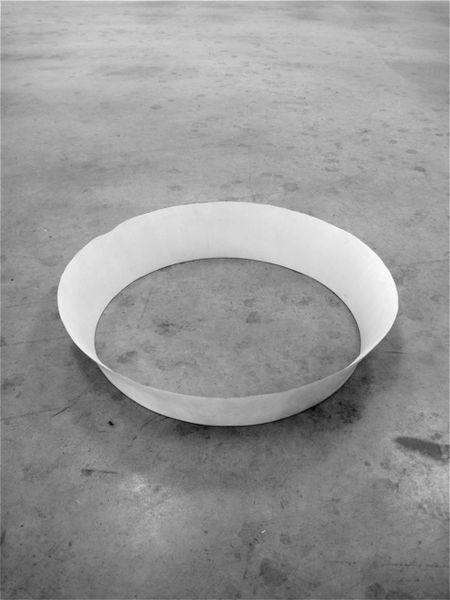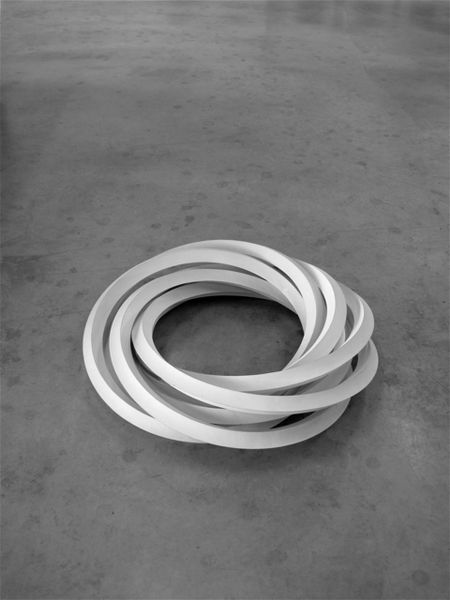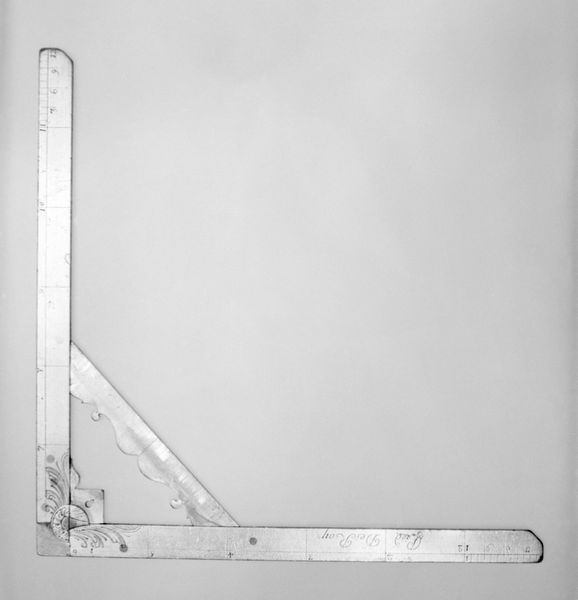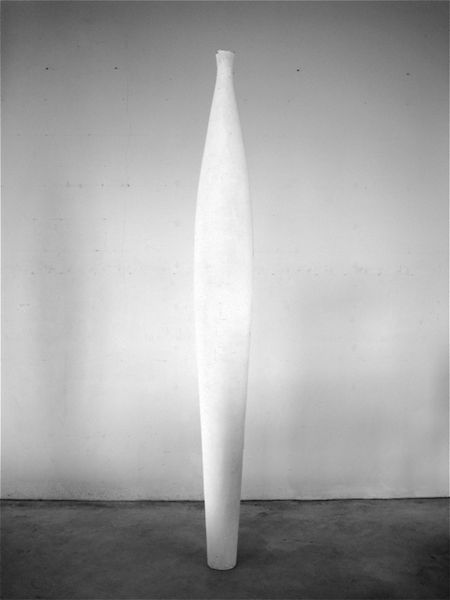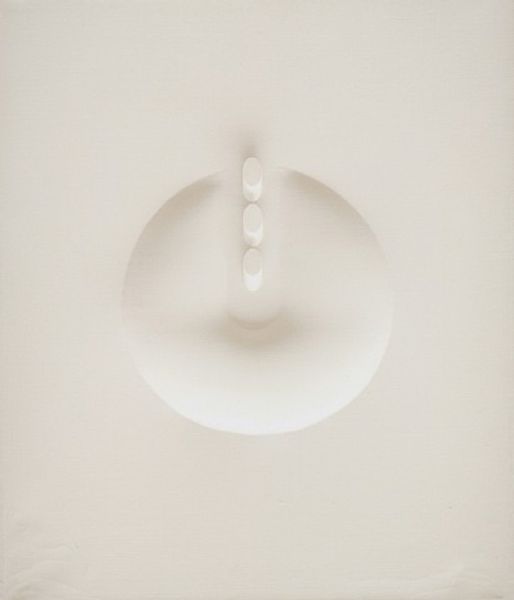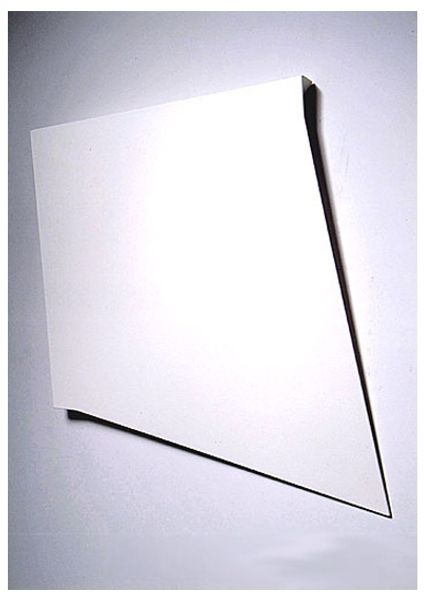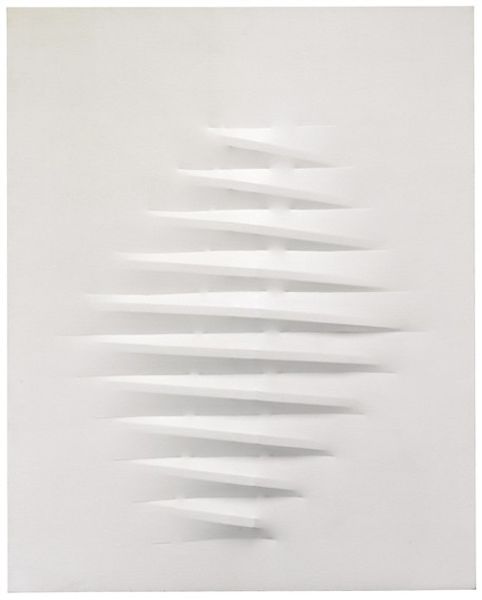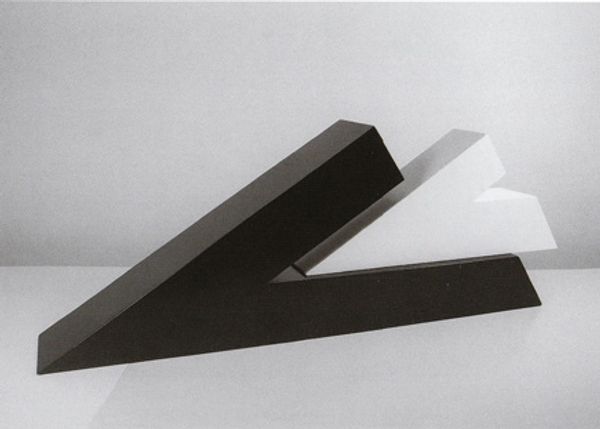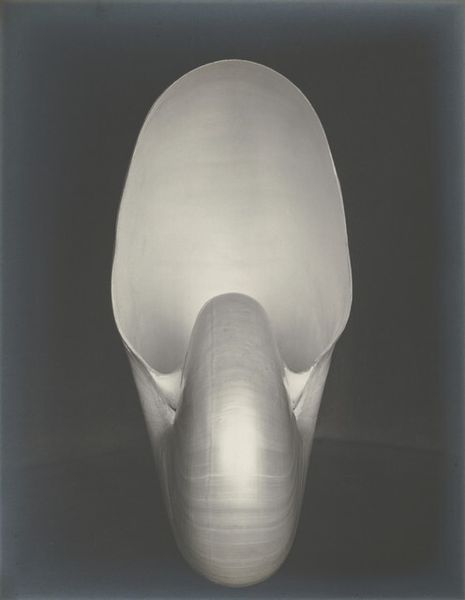
metal, sculpture
#
minimalism
#
metal
#
form
#
geometric
#
sculpture
#
abstraction
#
line
Copyright: Katsuhito Nishikawa,Fair Use
Editor: This is "Mobius" by Katsuhito Nishikawa, created in 1994 out of metal. Its twisting, endless loop gives it a sense of serene and elegant permanence, like a whisper of infinity. What echoes do you hear within its simple, stark form? Curator: I see the enduring human fascination with paradox and the infinite. The Mobius strip itself, discovered in the 19th century, became an emblem of mathematical curiosity. Nishikawa evokes more than just geometry; he touches upon our collective understanding of continuous transformation. Editor: Transformation? It feels so static and still. Curator: But is it, truly? The Mobius strip exists because of a transformation – a twist that redefines the surface. This twist becomes a symbol of how our understanding of the world constantly evolves, that things are not always what they seem. Metal, in its seeming rigidity, is itself a product of immense heat and change. Consider what other closed loops evoke. Editor: Like a circle. And those represent wholeness, right? Curator: Precisely. The Mobius strip disrupts that simple totality. It represents wholeness born of complexity and constant change, not just simple repetition. A constant reminder to look deeper. Where do you see echoes of this idea? Editor: Maybe in modern anxieties about the blurring lines between physical and digital realms… a looping back on itself? Curator: A brilliant observation! We pour our collective fears and hopes into abstract forms like this. The material is just a shell, an expression of constant symbolic dialogue. Editor: That changes everything! Now, when I look at it, it feels dynamic rather than static, which gives "Mobius" new intensity. Curator: Indeed, and seeing these interwoven layers adds such new richness and symbolic weight.
Comments
No comments
Be the first to comment and join the conversation on the ultimate creative platform.

